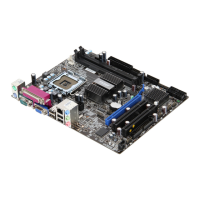
Do you have a question about the MSI G41M-P26 and is the answer not in the manual?
| Brand | MSI |
|---|---|
| Model | G41M-P26 |
| Category | Motherboard |
| Language | English |
Instructions for reducing radio frequency interference by reorienting antennas or adjusting separation.
Important notices regarding modifications and the use of shielded interface cables.
Essential precautions for safe equipment operation and handling, including reading the manual.
Specific warnings about environmental conditions, ventilation, and physical damage.
Cautions regarding battery replacement, liquid contact, and equipment damage.
Information on the EU directive for responsible disposal of electronic equipment and manufacturer obligations.
Visual representation of the mainboard with component labeling and connector identification.
Core hardware specifications including supported processors, FSB, chipset, and memory configurations.
List of all available ports such as LAN, Audio, IDE, SATA, USB, and serial ports.
Information on PCIE x16 and PCI slots, including their supported interfaces.
Details on the Micro-ATX form factor and the number of mounting holes.
Guidance on correctly aligning screw holes and installing standoffs during chassis installation.
Critical warnings to prevent damage from short circuits or contact between components.
Visual guide to the connectors available on the rear panel, including USB, LAN, and audio ports.
Step-by-step instructions for installing the CPU and its cooler for LGA775 sockets.
Detailed steps for correctly inserting memory modules into DIMM slots, ensuring proper orientation.
Tips for Dual-Channel mode and optimal memory module placement for system boot-up.
Information on connecting ATX 24-pin (JPWR1) and 4-pin (JPWR2) power supplies.
Details on connecting a floppy disk drive using the FDD1 connector.
Instructions for connecting storage devices via IDE (IDE1) and SATA (SATA1-4) interfaces.
Guidelines for connecting CPU and system fans, noting polarity and sensor pins.
Information on S/PDIF-Out, CD-In, front panel audio (JAUD1), and serial port (JCOM1) connectors.
Details on connecting front USB ports (JUSB1/2), front audio (JAUD1), and TPM modules (JTPM1).
Explanation of the chassis intrusion switch connection (JCI1) and warning system.
Procedure for resetting BIOS settings using the Clear CMOS jumper (JBAT1).
Overview of PCIe 2.0 x16 and PCI slots and their supported interfaces.
Technical details on how PCI devices manage interrupt requests via IRQ lines.
Instructions on how to enter the BIOS setup utility and navigate its menus.
Descriptions of major BIOS sections like Standard CMOS, Advanced Features, and Peripherals.
Detailed settings for CPU frequency, voltage, and memory timings within the Cell Menu.
Using M-Flash for BIOS updates and loading fail-safe or optimized default settings.
Viewing current CPU/DRAM frequencies and processor specifications within the BIOS.
Adjusting CPU FSB frequency, ratio, and Intel EIST settings for performance.
Configuring DRAM timings such as CAS Latency (CL), tRCD, and tRP for memory performance.
Detailed configuration of various DRAM timing parameters for performance tuning.
Adjusting FSB/DRAM Ratio, PCI-E frequency, and Spread Spectrum for EMI control.
How to load default BIOS settings for optimal system performance and stability.
Using Spread Spectrum to reduce electromagnetic interference and its impact on stability.

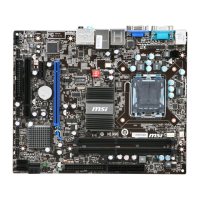
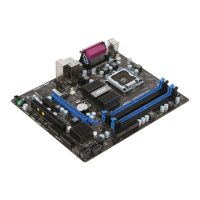

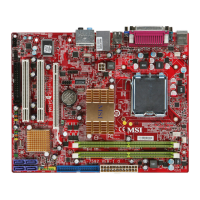
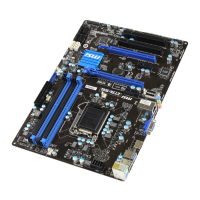



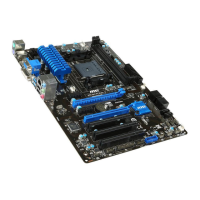
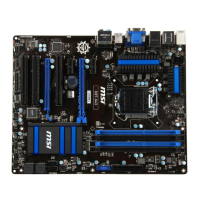
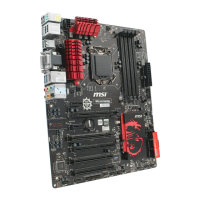
